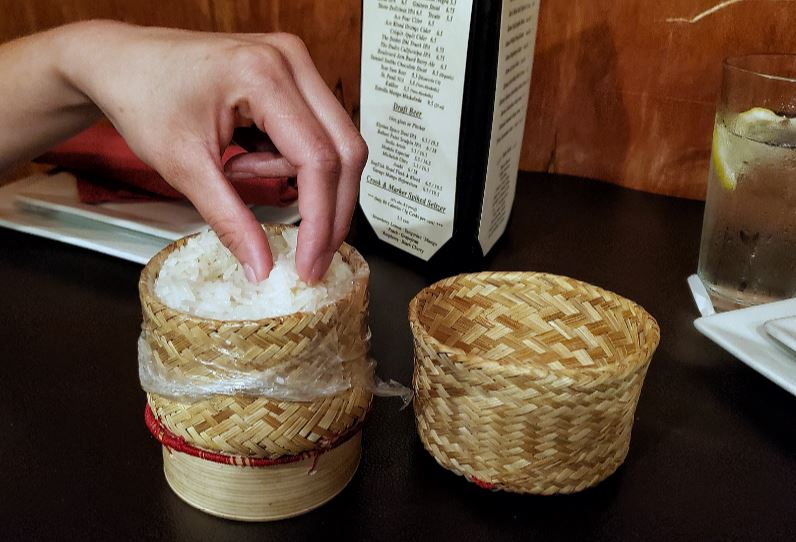How To Eat Sticky Rice Without Embarrassing Yourself

“Mexicans always love sticky rice,” was a saying my Laotian friend and his older brothers loved to exclaim, as a 12-year-old me learned the parallels between it and tortillas, and grasped the concept with their help.
The glutinous rice is prepared in different ways throughout Asia, but if you find yourself in a Southeast Asian restaurant such as Thai, Lao, or Vietnamese (but primarily in Laotian cuisine), it is meant to be grabbed with your hands and used as an edible utensil.
To this day, I’m thankful that my dear old friend and his family taught me about his culture’s dishes, as I often order sticky rice at Southeast Asian-based restaurants and get a, “Wow, you actually know how to eat sticky rice!” from the servers.

Apparently the way you handle sticky rice can easily expose your familiarity with Southeast Asian cuisine, according to Chef Saeng Douangdara, who spoke on the matter during the Foodbeast Katchup Podcast.
“So when I go to a Lao restaurant and I see non-Lao people come in, I can see if it’s their first time or not by the way they eat the sticky rice,” Chef Saeng said. “With sticky rice, we use that as a spoon.”
Saeng specializes in Lao cuisine, and has been an advocate for exposing the U.S. palate to the often-suppressed Lao flavors.

If you’re not familiar with sticky rice, it’s not unusual to start sticking your fork into it, serving it on the side of your plate and eating it as you would most other types of rice. But if you really want to look like a pro, Saeng laid out the steps plainly:
“You just take like a quarter size… play with it for a bit, clump that up until all the grains of the rice come together and it’s all mushy. Once you have it in that sticky form, you could make it flat if you want or just use it as a ball to just scoop up that extra jalapeno dip or that extra stew or beef. That’s kind of like your spoon, unless you’re eating like a noodle dish, then that’s where you use chopsticks.”

Similarly to how my fellow Mexicans like to rip apart tortillas and use them as scoopers or how pitas are used for Mediterranean food, sticky rice applies the same concept.
While it sounds simple, it could be a little intimidating to see that rice-filled bamboo basket come to your table and not be 100 percent confident with how to eat it.
Alas, it is all part of the beauty of learning about other cultures, respectfully enjoying their traditions, and expanding your palate in ways you never have before.
If you’d like to learn more about Chef Saeng, Laotian cuisine, and its subtle connection to Thai food, listen in to The Foodbeast Katchup, episode #76: Lao Chef Calls Out Foodbeast. If you enjoy the podcast, feel free to subscribe on iTunes, Spotify or even YouTube for more in-depth food conversations that you will not hear anywhere else.






















